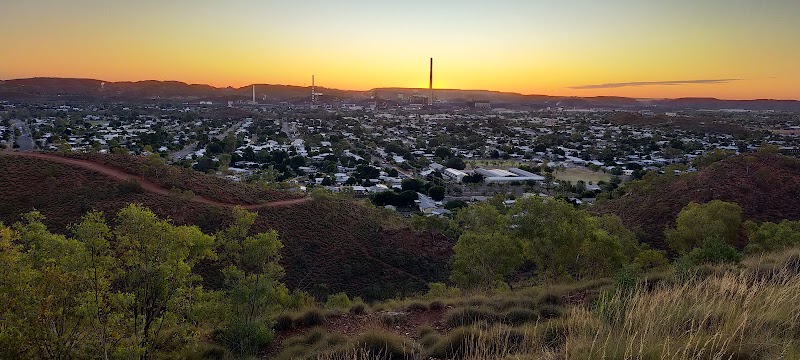
Experience the Outback Festival: Mount Isa’s Heartbeat of Adventure and Culture
The Outback Festival in Mount Isa sparks a lively mix of adrenaline-pumping rodeos, vibrant music, and rich indigenous arts in Queensland’s arid heartland. This ten-day event invites visitors to experience authentic outback adventure and culture, perfectly timed for the cooler, dry season.
Stay Hydrated in the Dry Outback Air
Queensland’s arid climate at Mount Isa demands consistent hydration. Carry at least 2 liters of water per day during festival events—even in cooler months, the dry wind can dehydrate you quickly.
Wear Breathable Layers
Temperatures vary from chilly mornings to warm afternoons in August. Layering allows you to adjust efficiently and stay comfortable throughout the day and into the cool evenings.
Arrive Early for Popular Events
Rodeos and concerts are festival highlights with limited seating and large crowds. Plan to arrive early to secure good views and avoid the rush.
Use Sturdy Footwear
Festival grounds feature dirt, gravel, and uneven terrain. Durable, comfortable shoes protect your feet and offer good grip as you move between venues and activities.
Experience the Outback Festival: Mount Isa’s Heartbeat of Adventure and Culture
Each year, Mount Isa pulses with raw energy as the Outback Festival unfolds over ten days of bold experiences and authentic celebrations. This is more than an event; it’s a journey into Queensland’s fierce, rugged outback where culture, adrenaline, and community intersect.
Set in the heart of the Australian Outback, Mount Isa's wide streets and sunbaked horizons welcome visitors with a rugged spirit that’s both approachable and untamed. The festival roars to life every August, bringing together locals and travelers eager to engage in everything from high-speed rodeos to country music concerts and indigenous art showcases.
The terrain itself holds its own stories. The dusty festival grounds offer sturdy footing for a lineup of activities that test both endurance and spirit. The outback arid air challenges participants to stay hydrated and pace themselves—but the reward comes in spectacular sunsets, raw timber stages, and the communal pulse of cheering crowds.
Visitors will find the rodeo the core pulse—a display of skills where riders face wild bulls and horses daring them to hold on tight. Nearby, workshops and exhibitions tie traditional knowledge with contemporary flair. Native plants and crafts give a practical touch to cultural appreciation.
Logistics matter. Mount Isa town center is compact and easy to navigate on foot, with accommodation ranging from campsites to motels. The festival's timing in August aligns with the dry season, offering cooler temperatures and clear skies, ideal for outdoor events.
Planning ahead ensures a smooth experience. Pack sun protection and versatile clothing layers for unpredictable outback temperatures. Hydration packs are a necessity—the dry wind nearby can steal moisture faster than expected.
The Outback Festival is a test of endurance, community, and curiosity—an event where nature’s unyielding character meets human celebration in the wide-open Australian landscape. Whether you’re there to cheer on the rodeo riders or dive into local culture, this festival delivers an adventure grounded in real outback grit.
Nearby Trips
All Adventures
Boat Charters
Water Activities
Adventures near Mount Isa, Queensland
Discover the unique and memorable adventures that make Mount Isa, Queensland special.
Frequently Asked Questions
What makes the rodeo at the Outback Festival unique?
Mount Isa’s rodeo is one of Queensland’s largest and most authentic, showcasing professional riders tackling notoriously tough bulls and horses. The event reflects the region’s working heritage with genuine outback grit rather than a polished commercial show.
Are there opportunities to experience Indigenous culture at the festival?
Yes, the Outback Festival includes dedicated indigenous art exhibitions, dance performances, and workshops, giving visitors a respectful insight into the traditions and contemporary creativity of local First Nations peoples.
What local wildlife might I encounter during the festival?
While the festival bustle keeps wildlife mostly at bay, nearby bushland is home to species like red kangaroos, wedge-tailed eagles soaring overhead, and colorful thornbills flitting among sparse trees.
Is it safe to walk around the festival grounds at night?
The festival area is well-lit and secure, but it’s wise to stay in groups and stick to designated pathways. Outback nights can bring unexpected chilly winds, so dress accordingly.
What are the best ways to get to Mount Isa for the festival?
Mount Isa is accessible by road, rail, and air. The regional airport connects to major Queensland cities, while highways accommodate robust road trips—perfect for travelers seeking an adventurous drive.
Are there lesser-known spots to explore around Mount Isa during the festival?
Indeed, places like the River Walk by the Leichhardt River offer quiet vistas, especially early morning. The Hard Times Mine historic site provides fascinating insights into mining heritage a short drive away.
Recommended Gear
Water Bottle or Hydration Pack
Staying hydrated is critical in Mount Isa’s dry air, especially during the outback festival’s outdoor events.
Sun Hat and UV Protection
Sun protection is a must even in winter; the outback sun is relentless and can cause rapid sunburn.
Comfortable Sturdy Footwear
Festival grounds feature rough, uneven surfaces requiring supportive and durable shoes.
Light Layers or Jacket
August mornings and nights are chilly; layering allows adjustment as temperatures shift through the day.
Local Insights
Hidden Gems
- "Kalkadoon Statue - pays tribute to Indigenous warriors and offers a powerful photo backdrop"
- "Leichhardt River Walk - a peaceful nature trail contrasting the festival’s bustle"
Wildlife
- "Red kangaroo"
- "Wedge-tailed eagle"
- "Australian thornbill"
History
"Mount Isa’s story is inseparable from the mining boom that built the town and the Indigenous groups who have lived on the land for thousands of years. The festival honors this blend of histories through events that highlight mining culture alongside indigenous art."
